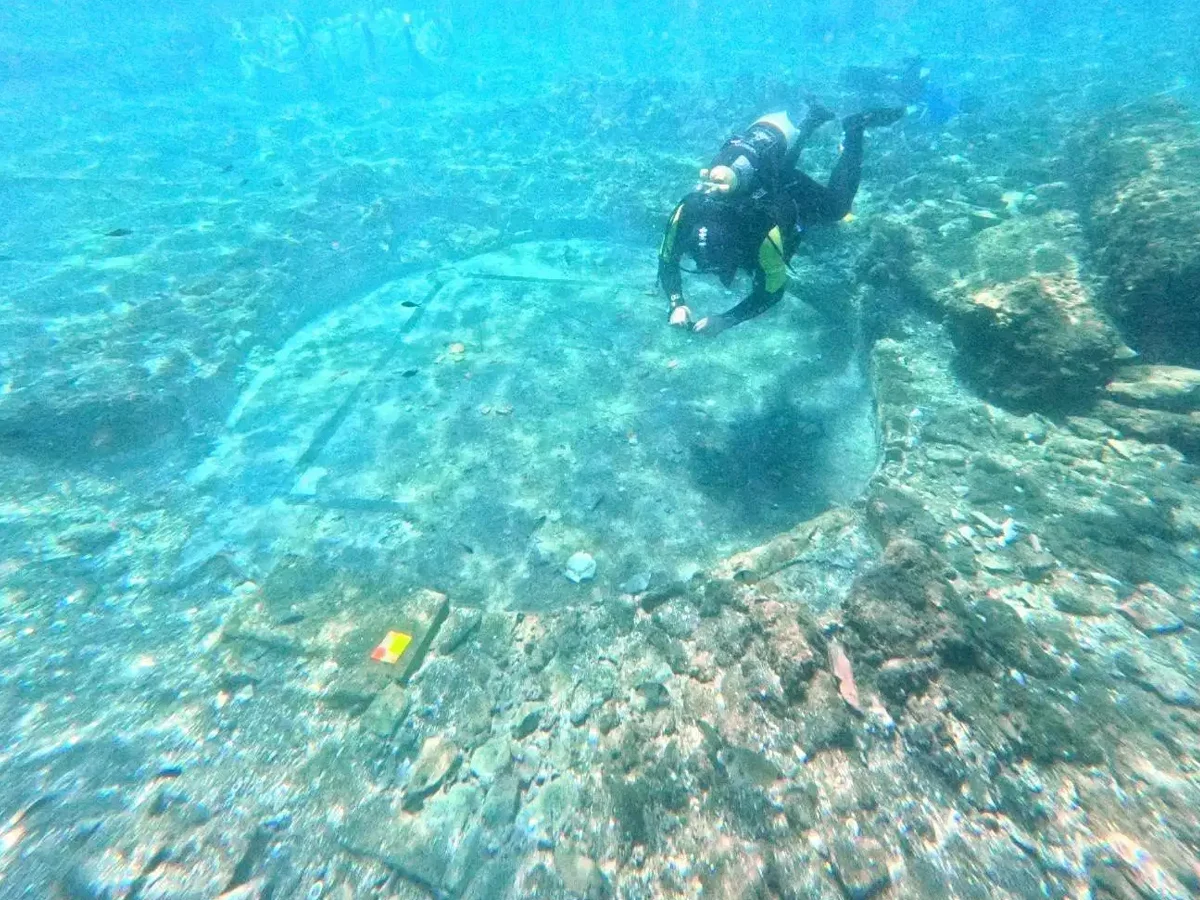Archaeologists have discovered a preserved Roman bathhouse in the partially submerged ruins of Baiae on the northwest shore of the Gulf of Naples.
During antiquity, Baiae was a popular Roman resort visited frequently by many notable Roman figures, including Gnaeus Pompeius Magnus (also known as Pompey the Great), Julius Caesar, Gaius Marius, Lucius Licinius Lucullus, Hadrian, and Septimius Severus.
The town had a reputation for a hedonistic lifestyle, evidenced in a contemporary account by Sextus Propertius, who described Baiae as a “vortex of luxury” and a “harbour of vice”.
Due to the town’s location in the Phlegraean Fields on the Cumaean Peninsula, local volcanic bradyseismic activity has periodically raised and lowered the land. This geological movement resulted in the submersion of the town’s lower areas.
In a recent underwater study, archaeologists have uncovered a remarkably preserved Roman bathhouse, a find that may correspond to the famed baths of Cicero’s villa described in ancient texts.
The bathhouse’s hot room, likely a laconicum or sauna, is exceptionally well preserved. Its mosaic floor remains intact atop a series of small brick pillars, a suspensurae system that allowed hot air to circulate beneath the surface. Heat also traveled through wall pipes, ensuring an even temperature, a hallmark of advanced Roman engineering.
Traces of ancient wall paintings, though fragmentary, still cling to the bathhouse walls, hinting at the richly decorated interiors once favored in elite Roman leisure spaces.
Experts believe these finds will shed light on construction techniques and the events leading to the bath’s destruction and abandonment. One working theory links the site to Cicero’s villa, known to have stood in the Baiae area.
Restoration is set to begin this fall, focusing on cleaning and stabilizing the mosaic floor, now partially encrusted with mortar deposits, and conserving the surviving wall decorations. Researchers hope the combined study of ceramics, architecture, and art will refine the chronology of the site and confirm its identity.
Header Image Credit : Ministry of Culture – Campi Flegrei Archaeological Park
Sources : Ministry of Culture – Campi Flegrei Archaeological Park







